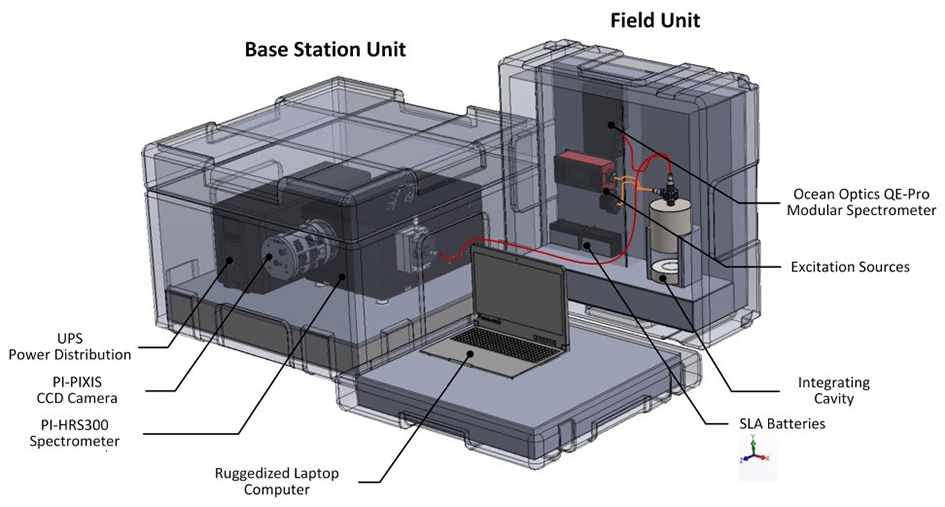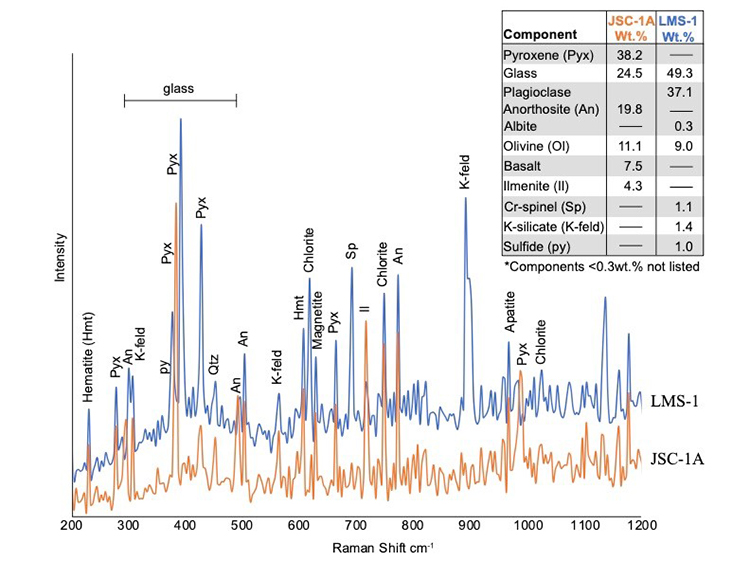Background
Samples returned from other planetary bodies provide us with the opportunity to learn about the origin and evolution of the Solar System, assess the potential for life elsewhere, and determine the resources available for future human exploration beyond Earth. Raman spectroscopy is a primary analytical technique for returned sample analysis because the composition of returned samples may be determined without damaging them. Additionally, field-portable Raman spectrometers are becoming an important tool in field-based studies to understand habitability of extreme environments on Earth, which are analogs of planetary environments.
Approach
We leverage the integrating Cavity Enhanced Raman Spectroscopy (iCERS) breadboard design from Co-I Retherford’s IR 15-R8834 to build a research-grade analytical iCERS instrument, which can be used for sample return analyses for several years with a companion field-portable version for terrestrial analog sample analysis (Figure 1). We will develop laboratory and field-based Deep-UV + VIS Raman capabilities to establish scientific leadership in planetary-focused Raman spectroscopy by completing the following capability development focused tasks:

Figure 1: The portable iCERS instrument employs a compact, modular design to reduce mass and power requirements. We will integrate SwRI’s iCERS into a ruggedized, modular field system to determine the organics and minerals present in planetary analog samples.
Design and fabricate a research-grade iCERS Raman instrument.
Develop calibration, sample handling, and analysis methods.
Determine the iCERS instrument detection limits of detection for rocky and icy planetary analog samples.
Demonstrate:
Returned Sample Laboratory capabilities: Apollo sample analysis
Field-based capabilities: planetary analog field site
Accomplishments
During the first quarter, we completed the design of our new research-grade iCERS instrument and began the process of fabricating it. Our field-portable instrument will weigh less than 25 pounds, has backpack attachments, and will fit in an overhead compartment. This will allow us to analyze planetary terrestrial analog samples in situ anywhere in the world (Figure 1). We have set up an optical laboratory for the iCERS instrument and developed sample handling techniques for returned samples which must be preserved given their rarity (Figure 2).

Figure 2: iCERS TRL-4 prototype Raman spectra allows us to differentiate major and trace mineral phases in two lunar simulant samples. Analysis of simulant samples prepares us to analyze and yield new data and insights from Apollo missions and other planetary returned samples.
